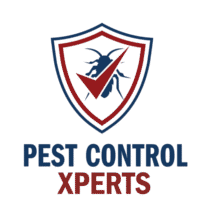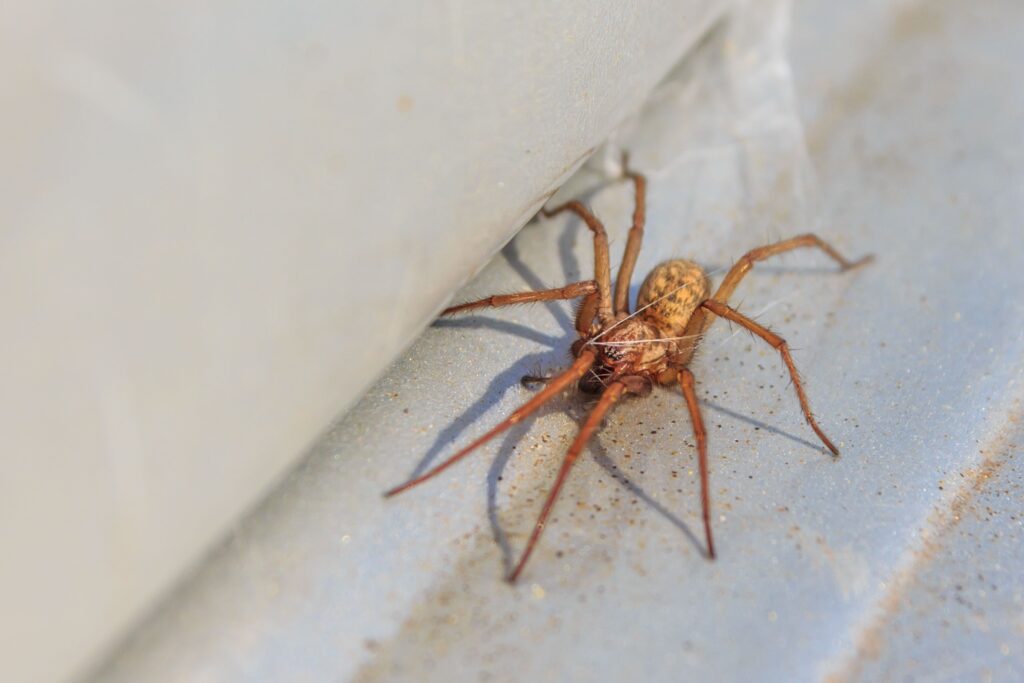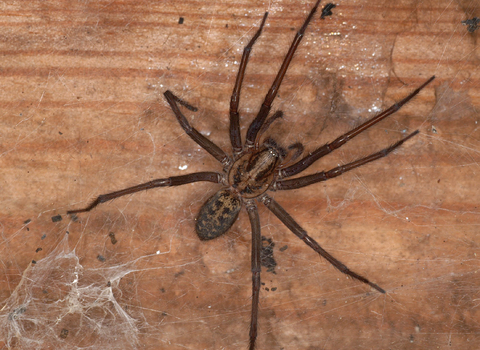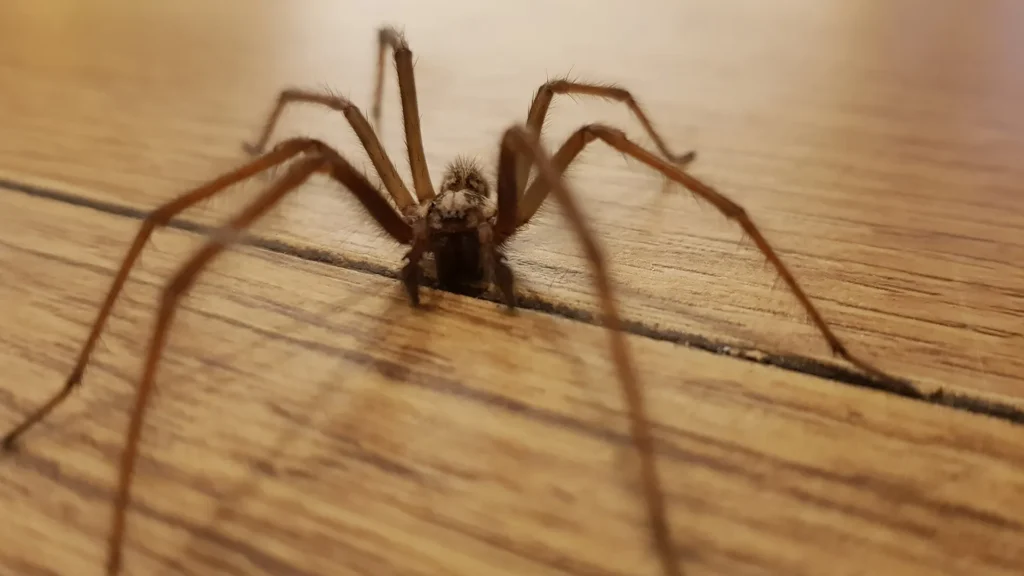Spider Removal in Ohio: Pest Control Xperts in North Olmsted
Serving North Olmsted and nearby areas such as Olmsted Falls and Berea.
Spiders play a vital role in controlling insect populations outdoors, yet their presence inside homes or businesses can unsettle those who discover webs or see larger spiders moving around corners. While some spiders are harmless, others may cause bites that leave red welts, and many people feel uncomfortable if they see multiple webs or spiders in living spaces. In North Olmsted and surrounding communities such as Olmsted Falls and Berea, spider sightings often increase when weather conditions push insects indoors, providing a ready food supply for these eight-legged creatures. Owners who detect numerous webs or suspect a venomous species typically want professional help to resolve the problem quickly.
Pest Control Xperts focuses on spider removal in Ohio, combining well-established methods, safe product usage, and prevention tips that reduce spider activity. Our exterminator in North Olmsted understands how spiders slip into basements, closets, or damp corners, spinning webs where insects gather. By identifying which species are present and addressing underlying insect concerns, we clear out current populations and guide owners on ways to prevent recurring infestations. This service page explores how spiders enter properties, why they pose issues, and the benefits of relying on specialized techniques instead of random do-it-yourself efforts.
Reasons Spiders Move Indoors in Ohio
Ohio’s changing seasons, along with indoor conditions, influence when and why spiders appear in living areas. Even though many spiders prefer the outdoors, they may seek shelter or follow prey indoors if situations allow:
- Insect Availability
Spiders feed on insects, so if a building has ants, flies, or other bugs, spiders have reason to remain. Properties that struggle with ongoing insect issues frequently experience more spider sightings. By controlling those insects, one also reduces spider numbers. - Weather Fluctuations
During colder stretches, spiders look for consistently warm areas. Basements, boiler rooms, or heated interiors prove appealing. Even in milder times, heavy rains or high winds might push spiders to seek safer indoor hiding spots. - Dark, Undisturbed Corners
Many spiders build webs in quiet places with limited traffic, such as behind stored boxes, under furniture, or in lesser-used rooms. Cluttered spaces let them nest away from daily disturbances, spinning webs that catch unsuspecting insects. - Moisture Factors
Spiders favor moderate humidity or dampness when hunting insects, which often need water. Rooms with leaky pipes or basements that stay humid encourage both insects and their spider predators. Fixing these moisture problems often lessens spider activity. - Openings Around the Exterior
Gaps in windows, missing door sweeps, or cracks in foundations let spiders crawl inside while searching for insects. Even small holes near vents or utility lines give them entry. Once inside, they explore corners, ceilings, or cluttered zones. - Late or Missed Detection
A lone spider might seem inconsequential, prompting minimal reaction until webs multiply. By the time owners realize many spiders linger, a deeper population might occupy hidden areas. Early intervention prevents populations from growing out of control.
Understanding these factors points to opportunities for owners to manage indoor conditions, seal cracks, and remove insect prey to discourage spider invasions. When spiders gather in visible numbers, a professional approach ensures more immediate and sustained relief.
Problems Associated with Spiders
Although most Ohio spiders are not dangerous, a noticeable indoor presence can still create issues:
- Fear and Discomfort
Many people experience anxiety around spiders, especially if larger ones appear unexpectedly. Seeing webs across doorframes or discovering spiders in bathrooms can spark ongoing unease or reluctance to enter certain rooms. - Potential Bites
Most native Ohio spiders cause only mild bites if disturbed, but encountering a brown recluse or black widow (though uncommon) requires prompt attention. Even harmless species, such as wolf spiders or jumping spiders, might bite defensively if threatened. - Web Accumulation
Multiple webs in corners, basements, or ceiling edges leave rooms looking neglected. For businesses like restaurants or retail stores, spider webs can undermine a clean appearance, deterring customers. Removing webs routinely can be time-consuming if the spider population is large. - Signs of Underlying Insect Problems
A large or sudden spider presence occasionally indicates other insects have proliferated indoors. Roaches, flies, or ants draw spiders looking for reliable prey. Addressing insect problems in tandem with spider removal often yields better outcomes. - Challenges in Identifying Species
Owners might mistake a harmless house spider for a more concerning type, leading to heightened worry. Alternatively, they may dismiss a truly problematic species if they assume all spiders are similar. - Missed Opportunities for Early Management
If small webs are overlooked, spiders can lay egg sacs containing many spiderlings. Untended, these hatchlings spread to other rooms, boosting the overall population and complicating eradication.
Proactively removing spiders keeps interiors free from recurring webs and lowers the stress of constant sightings. This is especially relevant when the presence of venomous species is possible, prompting quicker professional action.
Signs That Spider Removal Is Needed
While a lone spider may not signal a large infestation, certain signs suggest a more pervasive problem:
- Multiple Webs in Several Rooms
Spiders typically avoid each other, so seeing many webs across multiple corners may indicate numerous individuals. When webs appear in frequently used areas, the infestation could be expanding. - Egg Sacs on Walls or Furniture
Spiders affix small, round sacs that hold offspring to hidden surfaces. If owners spot egg sacs in basements or behind furnishings, a new wave of spiders could emerge if left alone. - Frequent Spider Sightings During Daylight
Though many spiders favor nighttime activity, spotting several in the day can mean the population is sizeable enough that some roam freely at all hours. - Staff or Guest Complaints
In businesses, repeated mentions of spiders or webs by employees or customers confirm that a control plan is necessary. For hotels or daycare centers, ignoring spider complaints may harm the facility’s image. - Large Wolf Spiders or Jumping Spiders Indoors
Seeing bigger species indicates an ample food supply, possibly other insects. A building with minimal insect issues rarely supports many large spiders. - Long-Lasting Web Accumulations
If webs remain in place and new strands appear daily, the spider population is likely thriving. Minor vacuuming might not keep up if more spiders arrive each night.
In these cases, seeking professional help from an exterminator in North Olmsted can eliminate hidden spiders and the insects they feed on. Trying to handle it alone often only removes visible webs, leaving eggs or hidden individuals.
Why Professional Exterminator Solutions Are More Effective
Although some owners attempt to sweep away webs or use general insect sprays, these partial measures rarely secure complete success:
- Thorough Inspection
Specialists track down spider harborages, scanning areas behind fixtures or in cluttered storage. By locating insect populations attracting spiders, a professional approach addresses the underlying prey that keeps spiders indoors. - Multiple Treatment Approaches
Techniques may include targeted insecticides applied along corners or baseboards, insect growth regulators for underlying insect pests, or vacuuming egg sacs to prevent hatching. A well-chosen combination stops both adult spiders and new generations. - Species-Specific Knowledge
Certain species require tailored methods. Brown recluse or black widow sightings demand more caution and careful product placement. American house spiders or cellar spiders can be handled through consistent removal of prey insects and strategic treatments. An experienced exterminator differentiates these species on sight. - Safe, Focused Application
Applying insecticides indiscriminately can harm indoor air quality or beneficial organisms. Professionals use minimal, low-toxicity products placed in discreet zones where spiders lurk. Once dry, these treatments pose little risk to people or pets. - Advice on Exclusion
If an open door threshold or windows with damaged screens permit insects inside, spiders follow. Exterminators highlight ways to seal cracks and reduce moisture, limiting the insect population. By doing so, spiders lose incentive to nest indoors. - Follow-Up
Many spider eggs hatch over time. If owners discover more egg sacs or new webs weeks later, a professional can return to treat overlooked corners or reapply insect growth regulators. This thorough approach ensures complete results.
- Thorough Inspection
Pest Control Xperts: Spider Removal in Ohio
Pest Control Xperts delivers spider removal in North Olmsted and surrounding regions such as Olmsted Falls and Berea. Our mission is swift, targeted relief backed by a commitment to prevention:
- Detailed Inspection
Our exterminator performs a room-by-room assessment, looking for webs, egg sacs, and signs of insects that feed spiders. We gather information from owners on which areas see the most spiders or frequent web buildup. This step confirms the severity of the problem. - Identification of Spider Species
Knowing if harmless house spiders are present, or if more concerning types like a brown recluse or black widow are suspected, guides product selection. We also observe environmental factors that draw large wolf spiders or funnel weavers. - Customized Treatment
We often apply insecticides along window sills, ceiling edges, and other points spiders favor. If hidden insects remain, we may incorporate insect growth regulators or baits to reduce spider prey. Vacuuming webs and egg sacs helps remove existing populations and stops hatching spiderlings. - Safe Product Placement
Our staff follows guidelines to keep chemicals off frequently touched surfaces and away from children or animals. Targeting cracks, corners, and discreet hiding spots ensures spiders make contact with lethal residues. We share re-entry or cleaning instructions if necessary. - Moisture and Lighting Adjustments
Depending on species, limiting damp conditions in basements or altering outdoor lighting can discourage insect swarms that draw spiders near doors. We suggest ways to trim vegetation or store items off floors, removing potential spider harborage. - Post-Treatment Check
If the infestation was significant, owners may schedule a follow-up visit to ensure no egg sacs remain or new webs form. Should fresh sightings occur, we refine the approach until spiders no longer bother residents or guests.
Steps Owners Can Take to Prevent Spiders
Once Pest Control Xperts handles active infestations, maintaining certain habits wards off future spider problems:
- Reduce Indoor Insects
Spiders appear where insects gather. Controlling ants, roaches, or flies by using sealed food containers, emptying trash often, and fixing leaks diminishes spider prey. Less prey means fewer spiders willing to nest indoors. - Clean Up Webs Quickly
Removing small webs as soon as they appear denies spiders the chance to capture insects. Consistent vacuuming of corners and under furniture also picks up egg sacs. Spiders thrive in undisturbed corners with low traffic. - Manage Outdoor Lighting
Strong outdoor lights attract night-flying insects. Switching to yellow bulbs or directing lights away from doors keeps insect populations at a distance, in turn discouraging spider approach. - Close Entry Points
Installing door sweeps or sealing cracks prevents insects and spiders from sneaking indoors. Window screens without holes also block wandering spiders. Even small gaps along foundation lines invite pests if unsealed. - Store Belongings Wisely
In basements or attics, using plastic bins instead of open cardboard reduces hidden nest spots. Shelving items off floors and rotating stored boxes occasionally denies spiders consistent, dark spaces. - Stay Alert to Early Webs
If new webs form in the same area repeatedly, it might indicate an insect or moisture condition drawing spiders back. Quick vacuuming and a closer look at possible entry spots stops expansion.
Why North Olmsted Owners Trust Pest Control Xperts
Our spider removal services stand out across North Olmsted, Olmsted Falls, and Berea for a few reasons:
- Focused Knowledge
Our exterminator remains updated on spider habits, advanced insect control methods, and products that target spiders without unnecessary impact on people, animals, or beneficial organisms. - Local Perspective
We recognize how weather in Ohio can fluctuate, pushing more insects indoors at certain times. By correlating these factors, we identify spider conditions quickly, tailoring solutions to each building design and occupant usage. - Careful, Low-Risk Applications
We utilize insect growth regulators or residual insecticides in line with label directions, minimizing occupant exposure. Clients can typically continue normal routines once treatments settle. - Answers to Questions
We explain how to get rid of spiders in North Olmsted thoroughly, covering every step from initial detection to sealing entry gaps. Owners learn about short-term cleaning or occupant guidelines if certain rooms need ventilation. - Varied Methods
Some spider species require more emphasis on controlling underlying insects, while others might demand removing webs in damp basements. We never rely on a one-size-fits-all approach. Instead, each plan is crafted to match conditions. - Commitment to Results
If spiders linger or reappear, we reevaluate quickly, adjusting insecticide placements or seeking any missed egg sacs. Our goal is a final resolution that leaves owners relieved and spider-free.
Contact Pest Control Xperts for Spider Removal in Ohio
Spotting webs in multiple corners, seeing multiple spiders daily, or worrying about potential bites usually signals a bigger spider problem than a single stray. Rather than tolerating ongoing webs or uncertain attempts at random sprays, rely on Pest Control Xperts for spider removal in Ohio. We help owners in North Olmsted, Olmsted Falls, and Berea through each stage, starting with a thorough inspection that reveals hidden areas where spiders spin webs or lay eggs. Our exterminator then applies insecticides or growth regulators where spiders live, controlling them along with any insect populations that attract them.
During the process, we emphasize occupant safety by placing products carefully. We also share instructions for vacuuming webs and disposing of debris to eliminate spiders or egg sacs. If additional visits are necessary, we handle them on a convenient schedule, verifying no leftover clusters or hidden corners remain. By the time we finish, owners can enjoy rooms cleared of cobwebs and the peace of knowing spiders do not lurk behind furniture.
Take proactive action now if you see new webs each day or feel uneasy about spider sightings near bedding, bathrooms, or waiting areas. Pest Control Xperts welcomes your questions about how to get rid of spiders in North Olmsted and offers prompt, reliable solutions. Contact us to arrange an inspection or to learn more about controlling insects that entice spiders indoors. Whether you face a mild spider presence or a more significant infestation, we adapt to your circumstances, delivering a cleaner, calmer interior for everyone.





